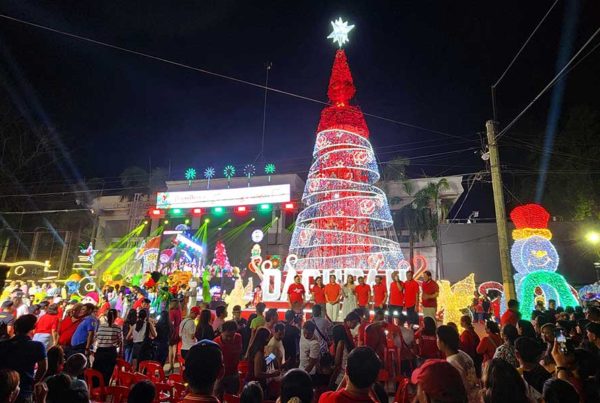US students complete study on best aquaculture practices
THE students from the University of Rhode Island in USA who arrived in Pangasinan for a 20-day educational tour to study the best aquaculture practices in the province left last week fully impressed by what they were exposed to.
The 10 students who arrived on January 1 led by their professor Dr. Michael Rice, were shown a demonstration and provided the unique experience in sex determination/cannulation of milkfish breeders, feed preparation/enrichment at the Philippine Bangus Center, seining milkfish broodstock from a maturation pond in the Bureau of Fisheries and Aquatic Resources (BFAR), all in Dagupan City.
At the BFAR center, the students also had the opportunity to dip into a bangus pond to harvest bangus and into the saltwater tilapia pond to harvest the fingerlings and the handling of the sexing of the male and female tilapia.
They also took a boat ride and explored the fish cages in Sual town and witnessed the daily harvesting of 60 metric tons of bangus.
They were in Alaminos City to and visited mangrove areas and were amazed at development of the sea cucumber farms, the seaweeds laboratories and broodstock facilities at Cariaz Island being maintained by the BFAR Regional Office 1 and the traditional salt farms.
The group also toured the Feedmix hatchery in Infanta town and visited bagoong (fish paste/sauce) factories in Lingayen town.
They were given a chance to visit the giant clam reserve and nursery in Bolinao town.
“The students had a very, very broad experience here in Pangasinan that is absolutely not possible in the United States. The number of species under culture here far exceeds what we have in the United States, not only in the number of species but in the volume of species as well,“ Rice said.
It was the fourth time Rice brought his students to the country to learn from Pangasinan’s experience since Philippines is one of the leading countries in terms of aquaculture, production and research.
The students will compile a journal of all of their learnings on a daily basis as their output and to be submitted to Rice.
They also organized a seminar where they shared their output with 36 students from Manaoag Science High School.
“As usual the Filipino hospitality has been superb. We have been grateful for everything that has been happening here and things are going to be extremely well,” Rice said.
He thanked, in particular, Dr. Westly Rosario, BFAR Dagupan center chief for allowing them to do this activity here.
Rice had worked in BFAR here in 1981 as a peace corps volunteer and had authored a paper with Westrimundo Rosario, the father of the incumbent BFAR Dagupan center chief, Dr. Westly Rosario, about oysters and oyster farming and exporting oysters. He spent some more years working in different capacities related to aquaculture in the country.
Rice was one of the two awardees of Giant STEPS award last year for making strides in aquaculture in the Philippines given by the Society of Aquaculture Engineers of the Philippines, Inc. and Philippine Aquaculture Society, Inc.
He was the first person who worked to improve the sanitary quality of farmed oysters in the Philippines by designing and setting up the first commercial-scale depuration plant for oysters situated in Barangay Tapuac, Dagupan City in order to ship the depurated and flash frozen shellfish to the lucrative Hong Kong and Singapore markets. (Philstar Wire Service)







